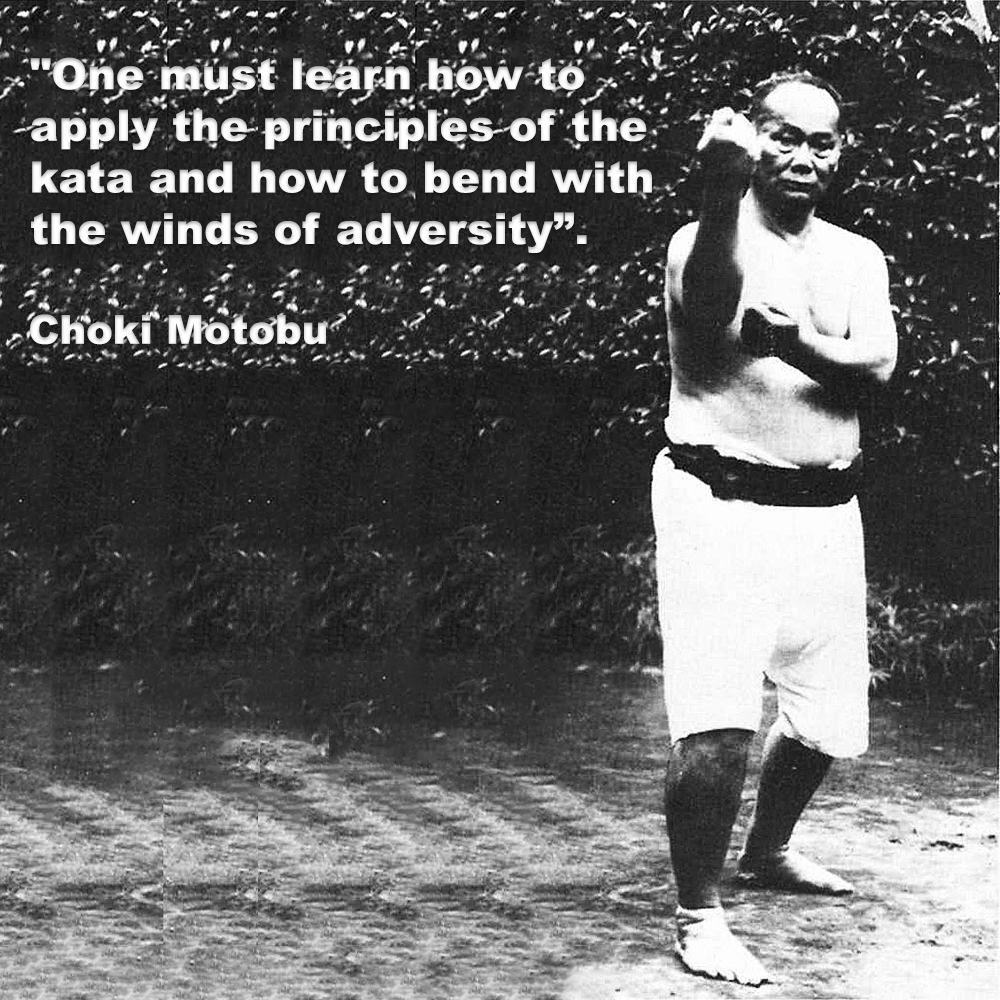
Kata are not simply a bunch of techniques one after the other;…. no, each and every kata were created to record the key principles and strategies of a complete fighting system.
.
Historically, an individual would formulate a kata to record their own personal fighting methods, the styles of the time.
.
It obviously would not be possible to record every single technique within a kata, as it would become unrealistically long. What makes much more sense, is to record techniques that expressed the key principles of a fighting system.
.
A good understanding of solid combat principles is infinitely preferable to simply memorizing many techniques. If you have the mindset of “if they do that technique, then I will use this technique”, then you are more likely to fail, because it places the attacker in control. It is not techniques that are able to help you survive an encounter, but an understanding of combat principles. All techniques are simply an expression of these principles.
.
The kata need to be studied deeply, not just practiced, in order to understand the meanings in them. If you don’t have the ability to see into the form, they are indeed nothing more than elaborate patterns.
.
Practitioners should remember that there is no such thing as advanced karate technique, only people who have advanced abilities. Likewise it could be said that there are practitioners with only a basic understanding of what it is their doing.
.
Kata originally served as a vehicle via which the arts could be transmitted in a complete manner. They were and are however, made up of fighting applications, and it is important to remember that it is these applications upon which the kata rests which are the more significant, they would be practiced first, the solo pattern came later.
.
Without the creation of these individual fighting applications, kata would not exist. So again I state, it is these applications that form to make the kata that are important to understand, and not simply performing the solo representation of the kata itself.
.
If you learn kata and think of them as a guideline for strategy, or think “what if”, the movements they contain will give you numerous different applications and options.
.
Each kata movement has a purpose, defensive or offensive. Some moves counter and others initiate. Each can have multiple meanings. One movement has a myriad of interpretations, a “reminder” of many options if you will.
.
How you eventually interpret these movements is based on your own knowledge of confrontation and intention. This is based on the knowledge passed on to you by your teacher and how you yourself interpret it, and eventually teach. You can rarely focus on something you have little or no experience with. So, if you have a limited perspective, or limited catalog of options, then all you will see are techniques repeated.
.
Recorded within the kata you will find the fighting principles of its creator. The techniques are important, but not as important as the principles of combat behind the techniques. Look beyond the name, the label of the technique, study the movement in its entirety, from beginning to end, these points are key to understanding, and I repeat this often.
.
Choki Motobu (who was one of Okinawa’s greatest fighters) said, “One must learn how to apply the principles of the kata and how to bend with the winds of adversity”.
.
Within kata we have the chance to learn from the past masters and perhaps gain a little of their skills. It would be foolish to ignore what is right in front of us and simply state that kata today has no value.
.
.
With thanks to Iain Abernethy
.
